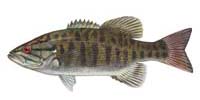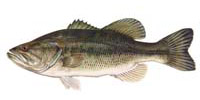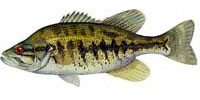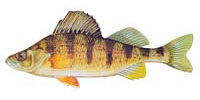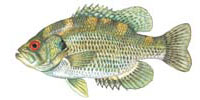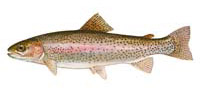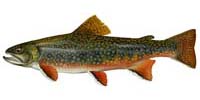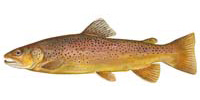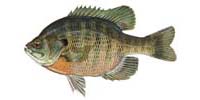The Toccoa River overall has plenty of trout, but the lower portion of the river has a reputation among fly fishermen as Georgia’s best trout fishing hotspot. Other fish species that live in the river include bluegill, perch, and bass, but catching one of these is rare and usually incidental. However, catching yellow perch has become more common in recent years.
Lake Blue Ridge is the center point between the two river sections of Toccoa. Above Lake Blue Ridge, the Upper section of Toccoa is the delayed harvest section of the river, and anglers may keep fish after November 1st and May 14th. The rest of the year is catch-and-release only. The water is deep and stays cold all year, so it is perfect for trout to reproduce and thrive. The best time of year for fishing is in the fall season, after some rain has fallen, but not so much that the water gets murky.
Below Lake Blue Ridge (and the dam) is the Lower Toccoa. Note that when the dam releases water, the lower section of the river can rise suddenly and without warning. The rising cold water from the dam makes fish more active, especially in summertime. However, for safety’s sake, check release schedules, which are published online and are also available by phone (call 1-800-238-2264, extension 4, 23, # for Blue Ridge Dam Info), so you won’t be caught unprepared.
Having a watercraft is helpful when fishing the lower Toccoa Section, because shoreline access to the river is challenging. The first fifteen miles from the dam’s release point are privately owned. Waders can find access at Tammen Park, Curtis Switch or Horseshoe Bend Park (McCaysville).
For fly fishing in the upper section up the Toccoa, use flies with attractor patterns like royal stimulators or royal wuffs, which are good imitations of insects these trout are used to seeing. When fly fishing in the lower section, where hatches are more consistent, dry flies in multiple sizes are recommended (Parachute Adams, Elk Hair Caddis, Henricksons, March Brown, Sulfers, Midges). Midge hatches (which happen in early evenings) are so dense that they look like swarms. Midges swirl over the water in breeding balls, creating the perfect chance for a fly fisher to catch trout that are waiting just below to feed on insects and eggs. For small fly sizes (like a size 22 hook), many fly fishers use a spinner fly as the dropper fly, then a slightly larger dry fly attached above, so the fly is easier to spot as it drifts in the water. A headlamp will help you navigate the low-light conditions, tie on your flies, and watch for the trout to rise.


